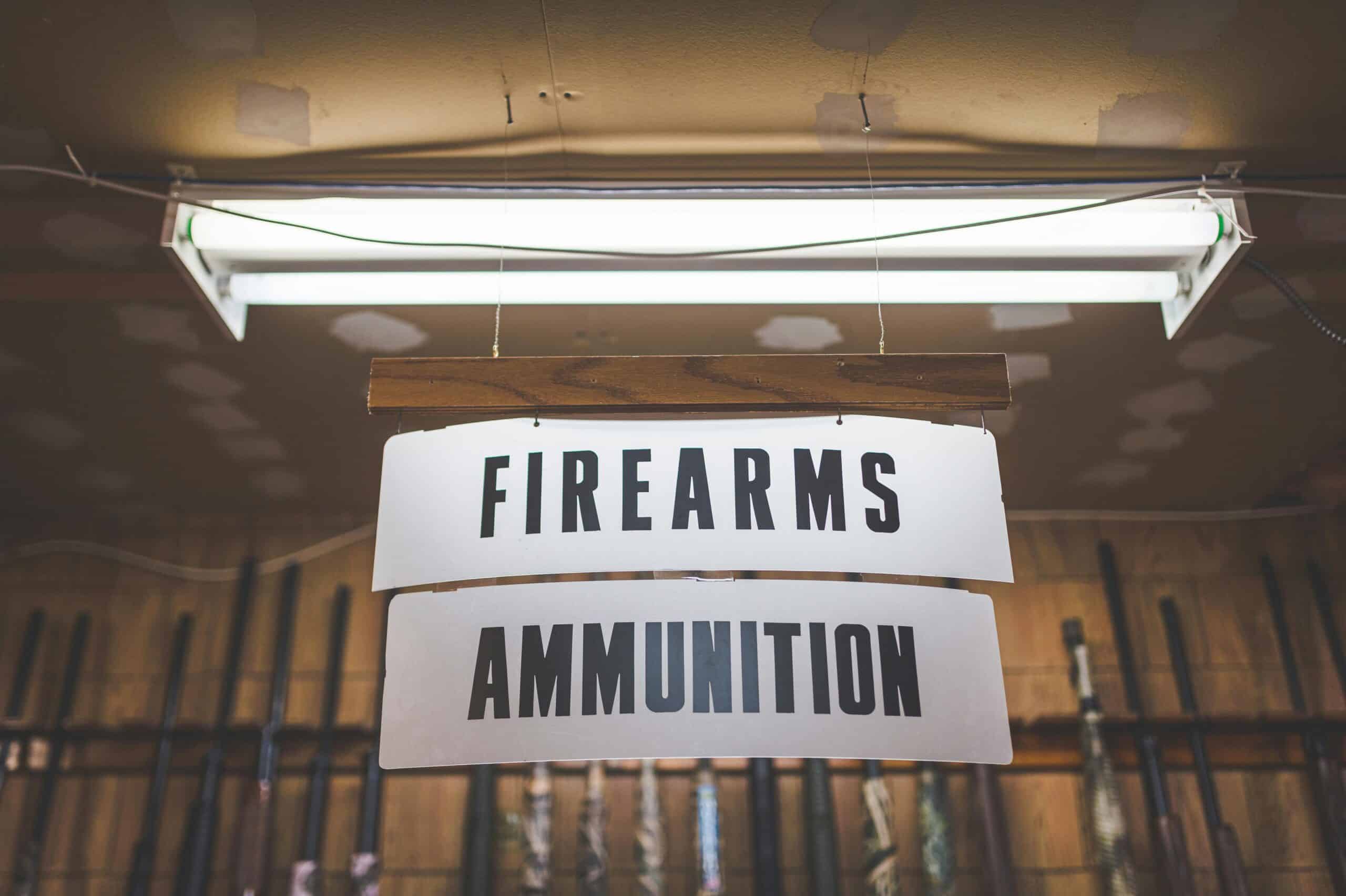There are many operational challenges when it comes to owning and operating a business in the firearm industry, and that’s just with high-risk payment processing. Gun and ammo merchants not only have to worry about compliance with legislative regulations and public perception, but they also need merchant account guarantees. Merchants can lose their merchant account, have their funds frozen, or even receive a visit from government authorities if a flag is raised or compliance issues arise, and all of these can happen overnight. Thus, firearm merchant payment processing should be well aware of firearms merchant account compliance, in addition to things called red flags that put processors on alert. This guide is going to discuss red flags you need to be aware of so you don’t fall victim to your own bad business practices without knowing it, in addition to how to integrate your compliance measures into a strategic, proactive approach that makes your processor trust you.
Why Firearms Payment Processing Is Classified as High Risk
Merchants who sell guns and ammunition are considered high risk because of legal reasons, reputational reasons and political inclinations. When a bank or card network sees a merchant with an unknown brand selling handguns or unknown origin ammunition, they’re more likely to do research due to potential exposures or public backlash. Merchants that sell firearms over state lines/incur immediate dangers; firearms legislation exists at the federal (Gun Control Act of 1968) and state levels (National Firearm Registration and Transfer Record) with specific expectations and punishments for noncompliance. The ATF investigates many firearms companies. Media attention and activist campaigns have led some processors to de-platform firearms merchants preemptively[1]. Therefore, without the potential for understanding compliance, gun and ammo merchants may never get access to payment processing for firearms. Yet those who run their companies appropriately, transparently, and with supportive documentation intentions get a better chance.
What Red Flags Look Like in Firearms Payment Processing
Red flags are actions or transactions that present heightened liability for either the processor or the acquiring bank. For firearms merchant accounts, the most common red flags involve inconsistent information or branding related to the business, excessive chargeback ratios, product types unrelated to what’s being sold, guns being charged to cards as restricted without documentation, and violations of credit card brand policies[2]. Red flags that are less frequent but still pose a problem include vague shipping policies, incorrectly categorized inventory, and failure to check consumer age[3]. Many processors have automatic fraud detection software in place, which flags these concerns automatically, so a mere infraction could instantly freeze or terminate an account. Knowing what’s considered a red flag is one step closer to better, more stable payment processing for your firearms business.
Understanding the Impact of Chargebacks in the Firearms Industry
A chargeback is a one-way ticket to review for firearms merchants. It’s not simply having too many chargebacks or too many chargeback requests; an uptick in disputes can tell your processor that you are an unacceptable firearms merchant, you’re not doing what’s required, or even that you’re engaging in fraud yourself. This is why it’s even more important to avoid disputes at all costs when you’re a firearms processing merchant. This means proper descriptions, secure payment processing options, proper shipping speed, and clear refund policies. Chargeback limits for high-risk merchants are lower than for regular merchants, making it easier to be flagged for things beyond your operational min and max. Chargebacks need to be avoided at all costs and from every point of the transaction process.
Product Transparency and Regulatory Alignment
Your product listings need to reflect compliance with your merchant account assignment, federal and state requirements. For example, if you’re allowed to sell firearm accessories but also sell serialized parts and high-capacity magazines without disclaimers or approvals, your site can be shut down instantly. Everything must be accounted for, registered, and labeled (with disclaimers, when necessary). Your site, as well as paper catalogs, should illustrate to customers and regulators that you’re aware of what can and cannot be sold legally. This includes loading your FFL paperwork; therefore, having a history of successful audits can improve processor trust via decreased classification risk.
The Role of Website and Checkout Compliance
Merchants themselves require compliance for regulatory reasons and card brand UX standards. Therefore, anyone with a firearms merchant account must have clearly visible terms of service on their website, return/refund policies, shipping policies, and age verification. Merchants must have a checkout that acknowledges age, acknowledges state residence (and shuts down sales from inappropriate states/cities), and keeps records of acceptance for purchase consent. The easiest way to get flagged is to have missing or non-compliant site text. Fortunately, many payment processors who support firearms-friendly merchants offer plugins or at least recommendations for business owners to create compliant checkout processes that keep in line with card brand requirements and avoid chargebacks/fraud[4].
Proactive Steps for Firearms Merchant Compliance
Maintain a Valid FFL and Upload It
To assess and approve firearms merchants, processors need to possess an FFL of their own, a Federal Firearms License. Keep it updated, submit it with your application, and be ready to resubmit it during annual reviews.
Implement Strict Age Verification
Firearm merchants should ensure that the buyer buying a firearm has the legal right to do so. This can be done with age verification software for eCommerce merchants or proper POS prompts/scanning mechanisms for brick and mortar establishments.
Use Proper MCC Classification
Merchant category codes (MCC) are used to determine the type of business. Merchants should never hide their type of business under an arbitrary MCC to avoid scrutiny. Instead, use the firearms MCC so that processors know that high risk isn't a scam.
Segment Product Listings Clearly
Any regulated, restricted, or serialized product should be put into its own sales line with disclaimers and appropriate documentation. This way merchants avoid automated flags that could elevate a merchant to a manual review.
Keep Your Chargeback Ratio Below 1%
Merchants should employ chargeback prevention tactics with proactive fraud filters, delayed shipments and concise return policies. Merchants should monitor chargeback ratios weekly or daily to know when they exceed the limit of industry standards of 1%.
Partner With Firearms-Friendly Processors
Only use high-risk payment processing merchants that understand the firearms world, facilitating tools for compliance. Avoid merchants like Stripe and PayPal which do not support firearm sales.
FAQ
Q: Why is firearms payment processing considered high risk?
A: Firearm merchants are subject to varying federal, state and card network regulations, so processors consider this a high-risk category due to liability, chance for media attention and regulatory compliance challenges.
Q: What red flags should firearms merchants avoid?
A: A red flag includes chargebacks exceeding 1% or 2%, no proof of product on the website, misrepresentative items, not having proper FFL documentation or failing to verify customer age and jurisdiction.
Q: Can I use PayPal or Stripe for firearms sales?
A: Absolutely not. PayPal, Square and Stripe outright say they do not allow any firearm-related transactions. Merchants have to find high-risk payment processing options that cater to such categories.
Q: What are the compliance requirements for a firearms merchant account?
A: You must have an account linked to a valid FFL, proper identification of products, systems in place for age verification, clear return and refund policies and proper merchant category coding[5].
Q: How do I prevent chargebacks in firearms sales?
A: Provide as much information as possible on items sold, track items in transit, use fraud filters, clearly outline return/refund policies and answer any and all customer questions quickly, as this reduces misunderstandings.
Q: What happens if I get flagged by my processor?
A: It all depends on the situation. Being flagged could lead to account reviews, hold times on settlements or termination. That is why compliance is mandatory, with proper documentation and proper processors, from the get-go.
Final Thoughts
Conducting a firearms business in 2025 means an added level of assurance when it comes to regulation and what consumers want, in addition to processor risk management. The easiest way to guarantee sustainability is to understand what’s required when it comes to high-risk payment processing and what actions will cause any merchant account to be flagged and suspended on the spot. With the right paperwork, fraud mitigation efforts, and site requirements, a merchant can have the proper foundation for continued success. Payment Nerds knows all about firearms merchant account compliance to ensure every firearms business has the proper payment processing abilities for compliance and expansion, so that these businesses can do what they do best to help their clientele, legally and efficiently.
Sources
- Bureau of Alcohol, Tobacco, Firearms and Explosives. “FFL Compliance and Dealer Requirements.” Accessed July 2025.
- Visa. “Regulations for Firearms and Ammunition Merchants.” Accessed July 2025.
- FTC. “Truth in Advertising and Online Commerce.” Accessed July 2025.
- Mastercard. “High-Risk Merchant Category Guidelines.” Accessed July 2025.
- Forbes. “Navigating Payment Processing for the Firearms Industry.” Accessed July 2025.











